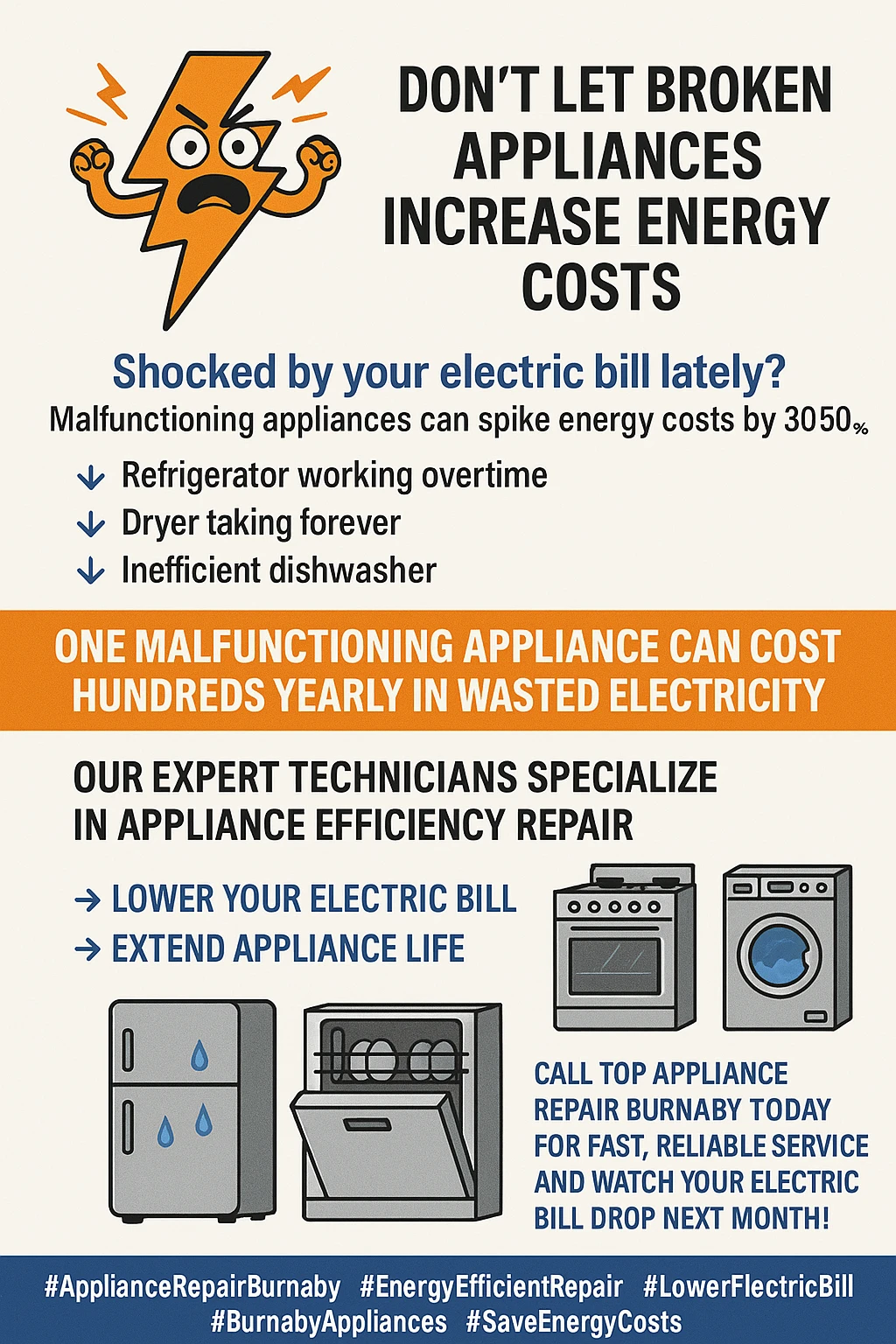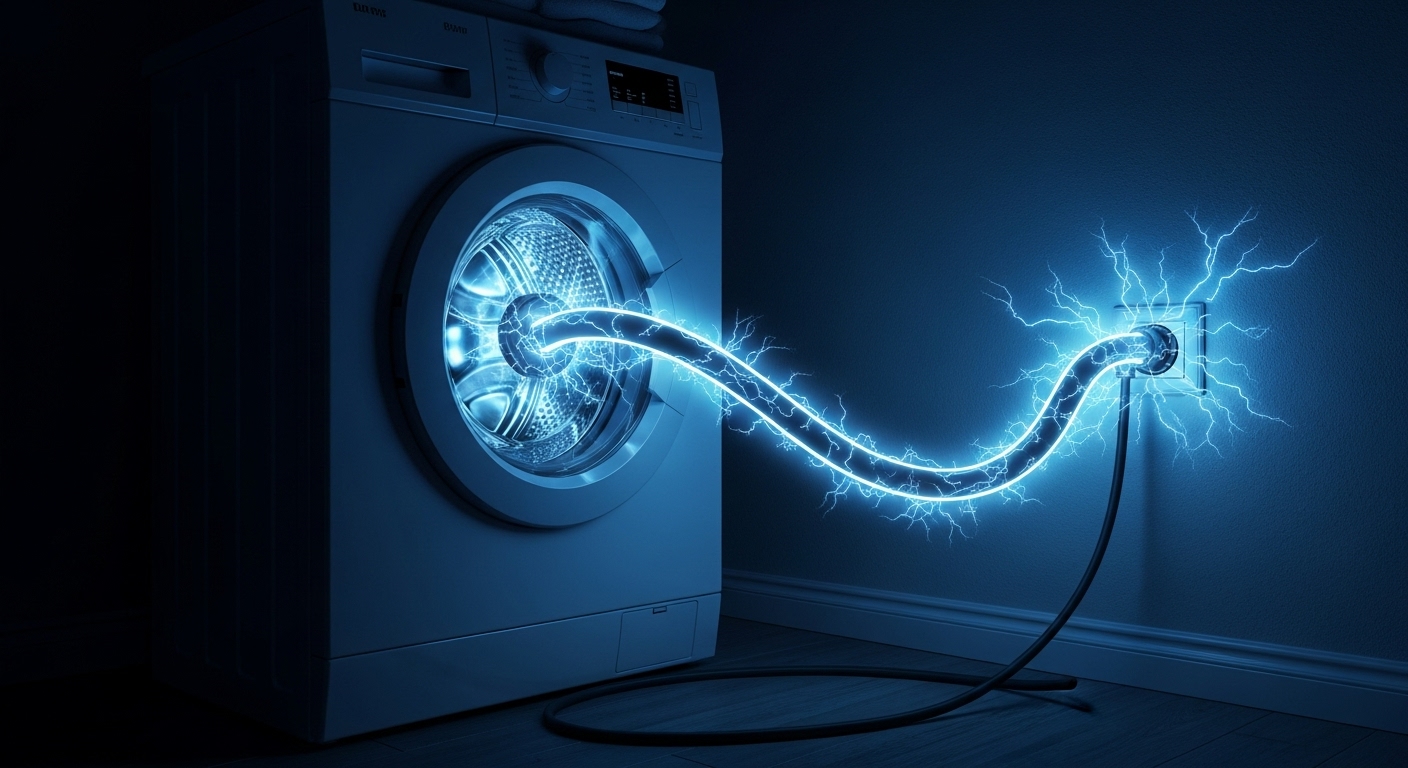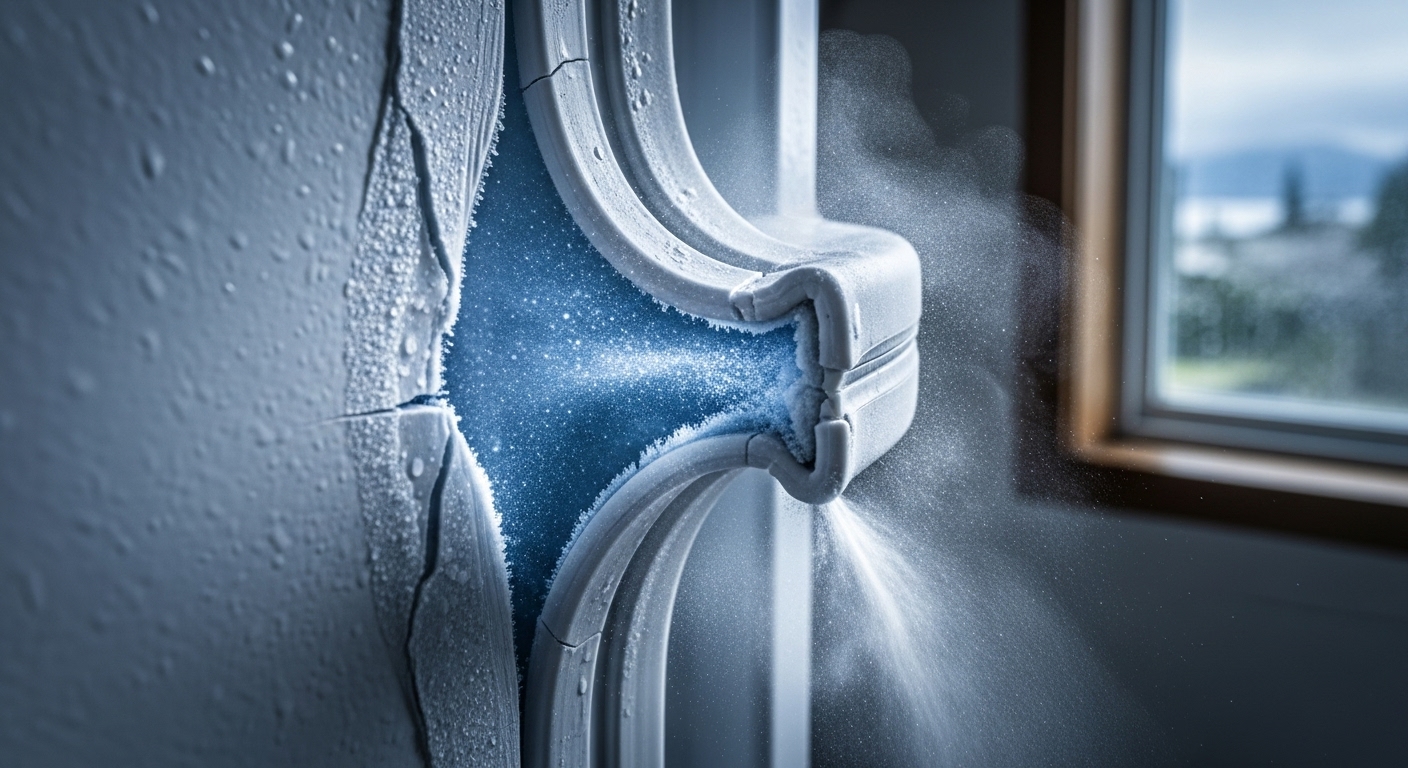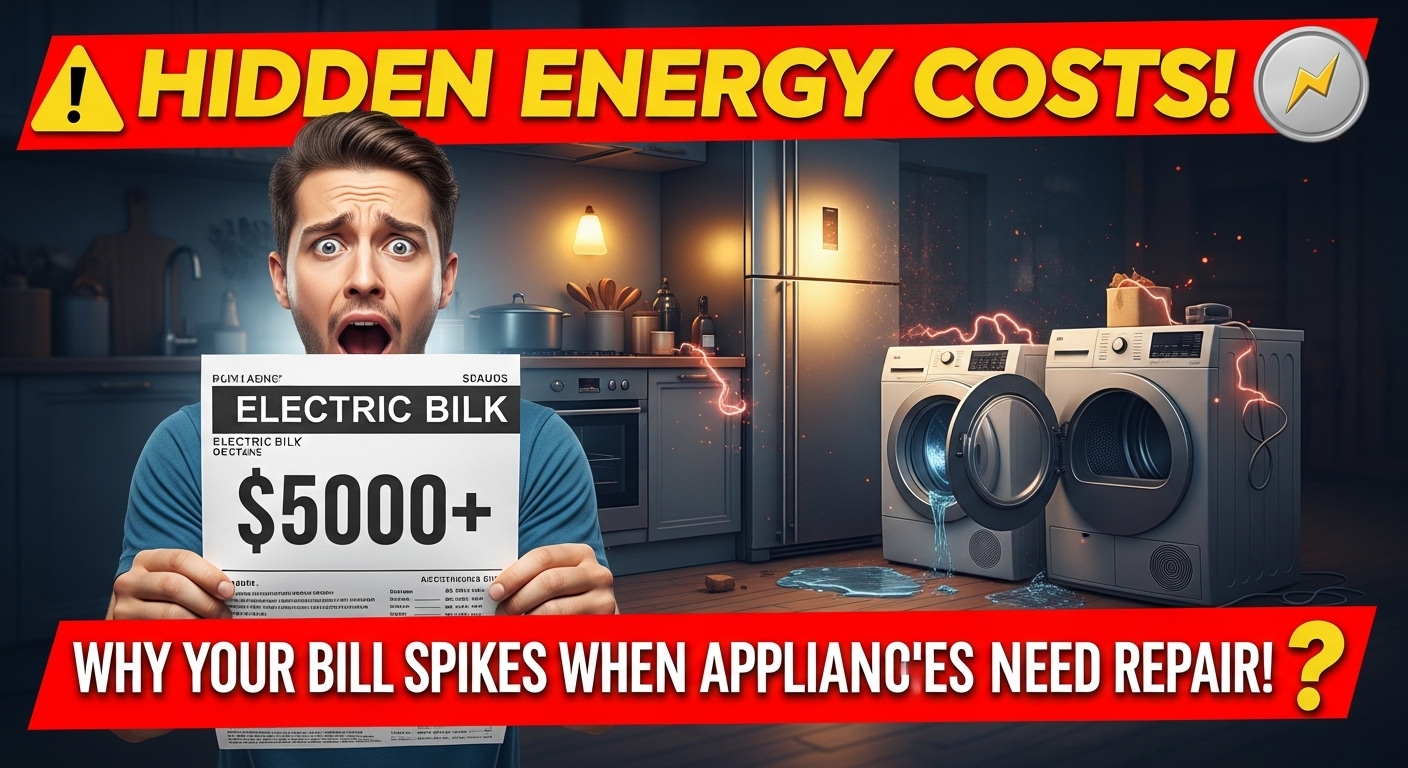Hidden Appliance Energy Costs: Why Your Electric Bill Spikes When Appliances Need Repair
Ever notice your BC Hydro bill creeping higher even though you haven’t changed your daily routine? The culprit might be hiding in plain sight – your appliances could be silently draining energy and costing you hundreds of dollars yearly without you even realizing it.
Picture this: you’re making your morning coffee in your Burnaby apartment when you notice the fridge sounds like it’s working overtime, humming louder than usual. Meanwhile, your dryer took an extra 30 minutes to get your clothes fully dry last night. These seem like minor inconveniences, but they’re actually red flags that your appliances are burning through electricity like there’s no tomorrow. As someone who’s lived through the shock of unexpectedly high utility bills, I can tell you that broken appliances are often the sneaky villains behind those budget-busting energy costs.
Living in the Vancouver area means we’re already dealing with some of the highest electricity rates in Canada, so every wasted kilowatt-hour hits our wallets hard. What many homeowners don’t realize is that malfunctioning appliances can increase energy consumption by 20-40% above normal levels, turning everyday household tasks into expensive energy drains. The good news? Understanding these hidden costs and knowing when to repair versus replace can save you serious money in both the short and long term.
[IMAGE PLACEHOLDER FOR IMAGE1]
When appliances start showing their age or developing problems, they don’t just become less effective at their jobs – they become energy vampires that suck power continuously. A refrigerator with a failing compressor might run constantly trying to maintain temperature, while a washing machine with drainage issues could extend cycles indefinitely, all while your meter spins faster and your monthly bill climbs higher.
Key Outtakes:
- Malfunctioning appliances can increase energy consumption by 20-40% above normal operating levels, turning minor repairs into major monthly expenses
- Energy vampire appliances account for 5-10% of residential energy use even when turned off, with broken devices consuming even more standby power
- Professional appliance efficiency repair can reduce energy costs by up to 30% through targeted maintenance and component optimization
- Vancouver’s high appliance replacement costs often make repair the more economical choice, even when following the traditional 50% repair rule
- Coastal climate conditions in Burnaby accelerate appliance wear, making regular maintenance crucial for preventing energy waste

The Hidden Energy Drain: How Broken Appliances Silently Spike Your Bills

Understanding how appliances waste energy when they’re not functioning properly is the first step to tackling those mysterious bill increases. What happens behind the scenes when your trusty household helpers start acting up goes way beyond just poor performance – it’s a cascade of energy inefficiency that can cost you hundreds of dollars before you even notice there’s a problem.
[IMAGE PLACEHOLDER FOR IMAGE2]
The concept of energy vampires takes on a whole new meaning when appliances begin malfunctioning. According to the Department of Energy, standby power accounts for 5% to 10% of residential energy use under normal circumstances. But when devices start failing, this phantom power consumption can skyrocket as internal components work harder to compensate for failing parts. Your seemingly “off” appliances might actually be drawing continuous power as they struggle with internal malfunctions.
When appliances don’t function correctly, they consume significantly more energy due to improper operation patterns. A washing machine with a faulty sensor might run multiple rinse cycles unnecessarily, while a dishwasher with clogged spray arms will extend wash times trying to achieve proper cleaning. These extended operation cycles don’t just waste water – they dramatically increase electricity consumption as motors, heating elements, and pumps work overtime.
One issue that many homeowners don’t consider is how appliance overcompensation affects energy bills. When your refrigerator’s compressor starts failing, it doesn’t just stop working – it works harder and longer trying to maintain proper temperatures. This overcompensation can cause energy consumption to increase by 30-50% as the appliance struggles to perform basic functions that should be effortless.
The interconnected nature of modern appliances creates what I call cascading energy waste effects. When one appliance fails, it can cause others to work harder too. A failing refrigerator that runs constantly will increase your kitchen’s ambient temperature, forcing your air conditioning to work overtime during summer months. Similarly, a dryer with blocked vents will pump hot, humid air into your laundry room, affecting nearby appliances and potentially causing humidity issues throughout your home.
Burnaby’s Most Energy-Wasting Appliance Problems

Living in Burnaby’s coastal climate creates unique challenges for appliance efficiency that homeowners in drier regions rarely face. Our combination of humidity, salt air, and temperature fluctuations puts extra stress on household appliances, leading to specific failure patterns that can dramatically increase energy consumption. Understanding these local factors helps you spot problems before they turn into budget disasters.
[IMAGE PLACEHOLDER FOR IMAGE3]
Refrigerator efficiency failures top the list of energy-wasting problems for good reason. Your refrigerator runs almost continuously, making it one of the biggest consumers of electricity in your home. When there’s a problem with your fridge’s ability to cool efficiently, it draws significantly more power to compensate for failing components. Faulty door seals are particularly common in our humid climate, allowing cool air to escape and forcing the compressor to run constantly.
Compressor issues represent another major energy drain that’s especially problematic in coastal environments. Salt air can accelerate corrosion of external components, while humidity affects internal electrical connections. When compressors start failing, they don’t just stop working – they cycle on and off frequently, each startup consuming a surge of electricity that can double or triple normal energy usage patterns.
Dryer problems create some of the most dramatic energy waste scenarios I’ve encountered. Blocked vents are incredibly common in Burnaby due to our damp climate, which creates conditions where lint buildup becomes compacted and restricts airflow. When vents are blocked, your dryer works much harder to function properly, often requiring multiple cycles to dry clothes that should dry in one standard cycle. Heating element problems compound this issue, forcing the dryer to run longer periods to achieve adequate drying.
Washing machine motor and drainage issues create a perfect storm of energy and water waste. A washing machine that doesn’t drain properly will run extended cycles trying to complete its programmed sequence. Motors that struggle with mechanical issues require more electricity to achieve the same agitation and spin speeds, while malfunctioning sensors can cause machines to run indefinitely trying to reach programmed parameters.
Burnaby’s coastal climate creates unique appliance challenges that inland homeowners rarely experience. Salt air accelerates metal corrosion, particularly affecting external components like condenser coils and ventilation systems. The constant humidity can cause electrical connections to degrade faster, leading to intermittent operation that wastes energy through frequent starting and stopping cycles. These environmental factors mean appliances often develop efficiency problems earlier than their expected lifespan would suggest.
Energy Efficient Appliance Repair Solutions That Cut Costs

Smart appliance repair goes beyond just fixing what’s broken – it’s about restoring and often improving energy efficiency to reduce your monthly operating costs. Professional repair services in the Vancouver area have evolved to focus on efficiency optimization as part of their standard service protocol, recognizing that energy savings can offset repair costs over time.
Professional energy efficiency assessments represent a game-changing approach to appliance repair. Rather than simply addressing immediate problems, experienced technicians evaluate overall appliance performance to identify efficiency problems before they become major issues. These comprehensive diagnostics can reveal multiple inefficiencies that would otherwise go unnoticed until they caused significant energy waste or complete appliance failure.
Component-specific efficiency repairs offer targeted solutions that can dramatically reduce energy consumption. When repairing motor issues, drum sensors, or cleaning clogged vents, skilled technicians can restore original efficiency levels or even improve upon them. For example, replacing a failing refrigerator compressor with a newer, more efficient model can actually reduce energy consumption below original specifications while solving the immediate repair need.
Modern repair techniques increasingly incorporate Energy Star-rated components when performing appliance repairs. Upgrading to high-efficiency parts during repair can provide long-term energy savings that help justify repair costs. LED lighting systems, variable speed motors, and improved insulation materials can all be integrated during repair work to enhance overall appliance efficiency.
Preventive maintenance programs offere
